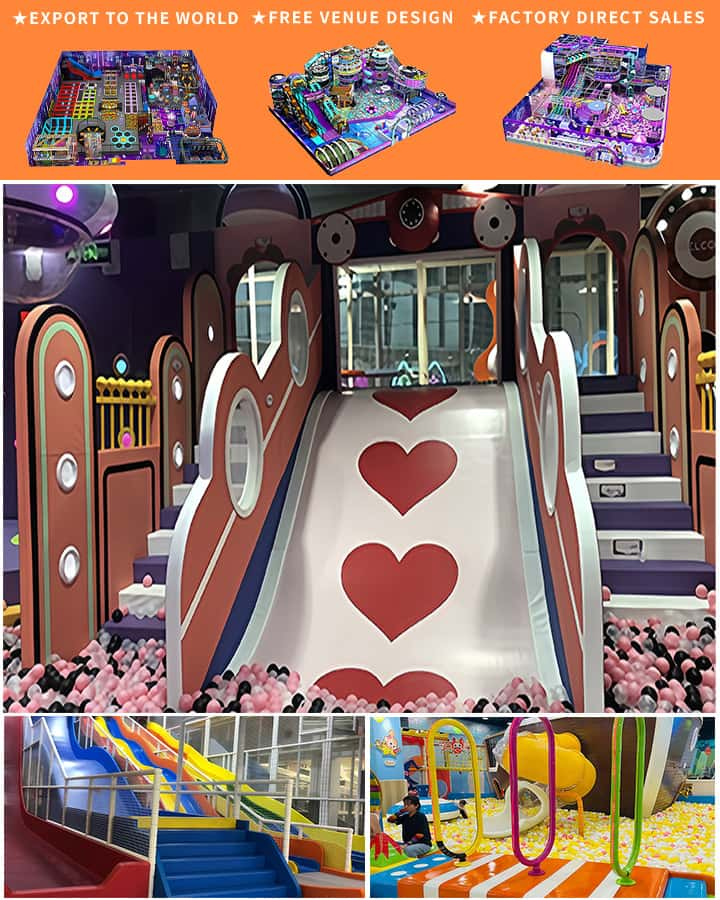Playgrounds in parks are vibrant hubs of activity, laughter, and joy. They are designed to cater to children’s playful instincts while providing opportunities for physical development and social interaction. Understanding the names of common playground equipment can help you appreciate these recreational spaces even more. Let’s take a closer look at some popular playground equipment names and their features.
The Swing Set: Classic Fun for Everyone
One of the most recognizable pieces of playground equipment is the swing set. Swings come in various forms, including traditional belt swings, toddler swings with safety harnesses, and adaptive swings for children with disabilities. Swings provide a delightful experience as they soar through the air, promoting coordination and balance while offering sheer enjoyment.
Slides: Downward Thrills
Slides are a staple on any playground, captivating both young and older children. They come in different shapes, sizes, and materials, from simple straight slides to twisty, turny models made of metal or plastic. Some slides are standalone structures, while others are integrated into larger play complexes. Sliding down offers a quick thrill and helps develop a child’s sense of spatial awareness and orientation.

Jungle Gyms: Adventure Awaits
Jungle gyms are versatile climbing structures that stimulate adventure and exploration. Often featuring interconnected bars and platforms at various heights, jungle gyms challenge children’s motor skills and problem-solving abilities. They encourage physical fitness through climbing, balancing, and navigating obstacles, making them an excellent choice for active play.
Merry-Go-Rounds: Spinning Delights
Merry-go-rounds bring a touch of whimsy to the playground. These circular structures allow children to spin around while sitting on individual animals or seats. Powered by pushing off the ground or occasionally by pedals, merry-go-rounds offer a gentle, enjoyable ride that promotes social interaction and teamwork as kids push together to keep it spinning.
Seesaws: Up and Down Together
Seesaws, also known as teeter-totters, are classic playground favorites that require cooperation between two participants. As one child goes up, the other comes down, fostering a sense of give-and-take and timing. Modern seesaws may have safety features like rubber seats and handle grips, ensuring secure and fun play for all involved.
Climbing Walls: Scaling New Heights
Climbing walls provide a vertical challenge that appeals to children’s adventurous spirits. Typically made from textured surfaces like plastic rock formations or rope nets, these walls encourage upper body strength and coordination. Some climbing walls include handholds and footholds of varying difficulty levels to accommodate climbers of different ages and skill sets.
Sandboxes: Creative Corners
Sandboxes offer a tactile and imaginative play experience. Filled with sand and often equipped with shovels, buckets, and sand molds, these shallow pits invite children to dig, build, and create. Sandplay enhances fine motor skills, creativity, and sensory exploration, making it a cherished element of many playgrounds.
Spring Riders: Bouncing Fun
Spring riders, such as frog hoppers or rocking animals, add an element of bouncing excitement to the playground. Children sit or straddles these spring-loaded toys and bounce up and down, which not only provides exhilarating fun but also aids in developing gross motor skills and core strength.
Conclusion
Park playgrounds are treasure troves of engaging equipment that cater to children’s diverse needs and interests. From swings and slides to jungle gyms and seesaws, each piece of equipment offers unique benefits and endless hours of entertainment. By familiarizing yourself with the names and features of these playground staples, you can better appreciate the thoughtful designs that make parks inviting spaces for play, growth, and community bonding. So next time you visit a park, take a moment to explore and enjoy the wonders of playground equipment!




